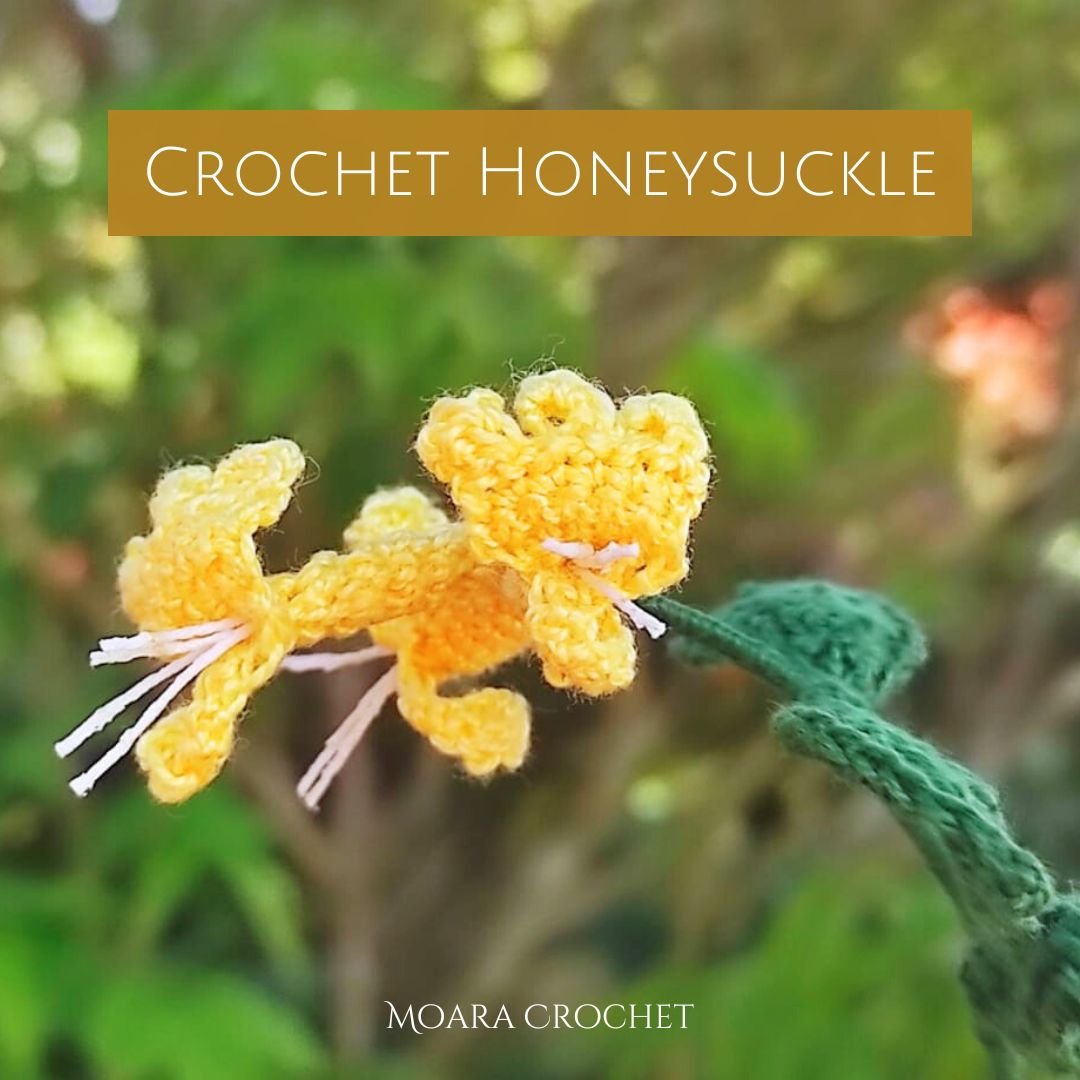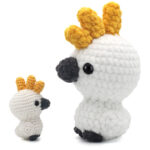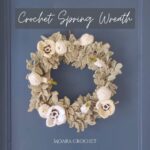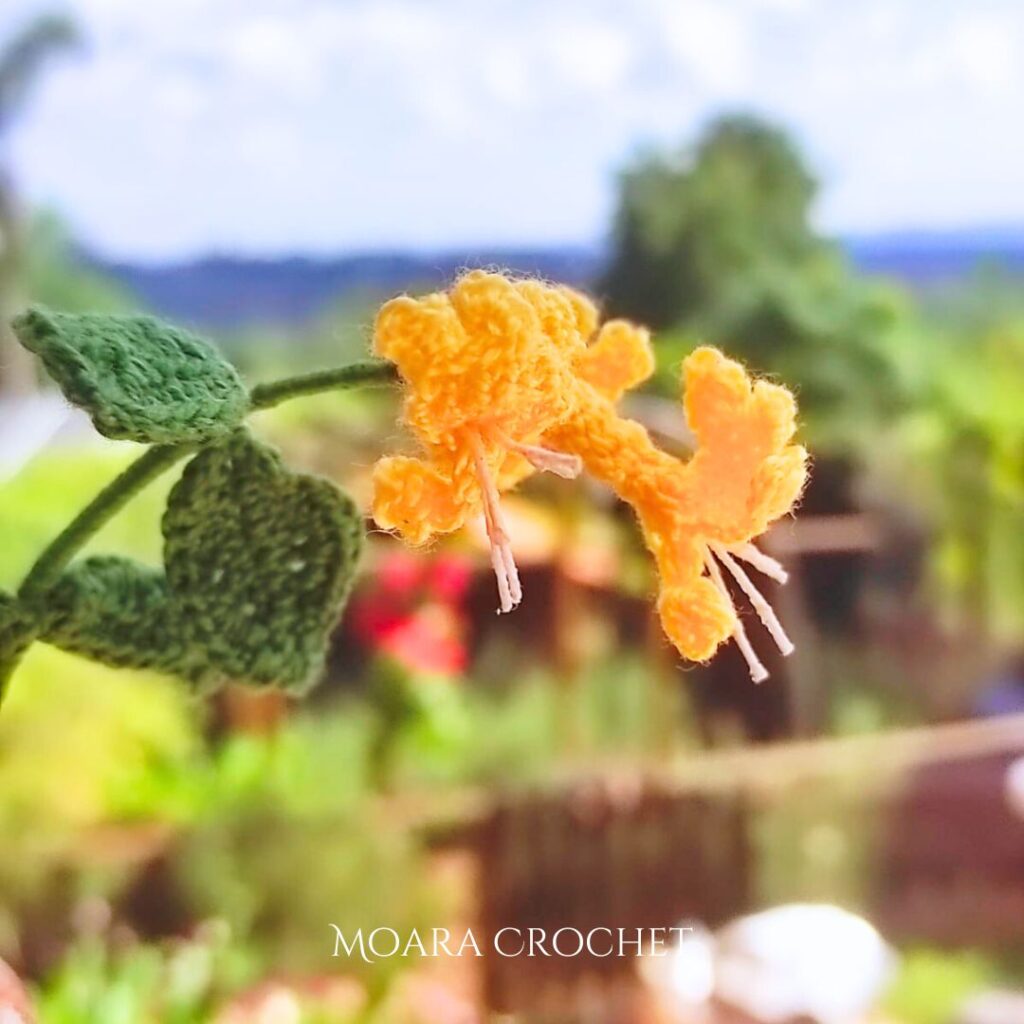
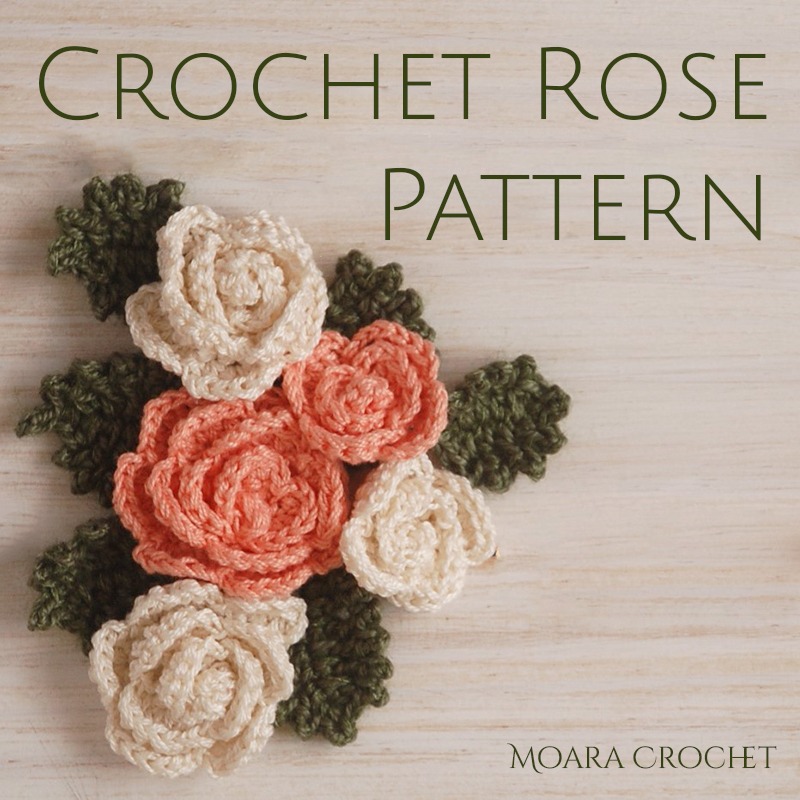
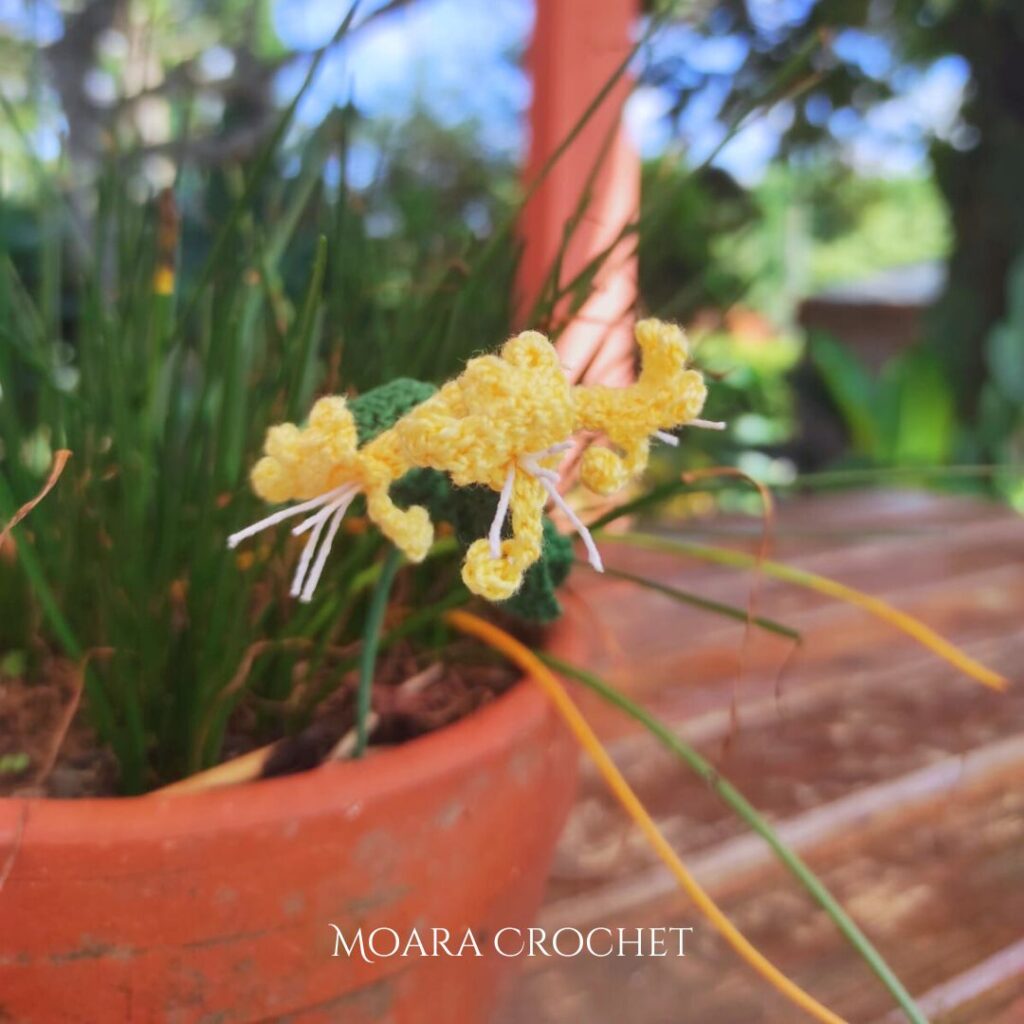




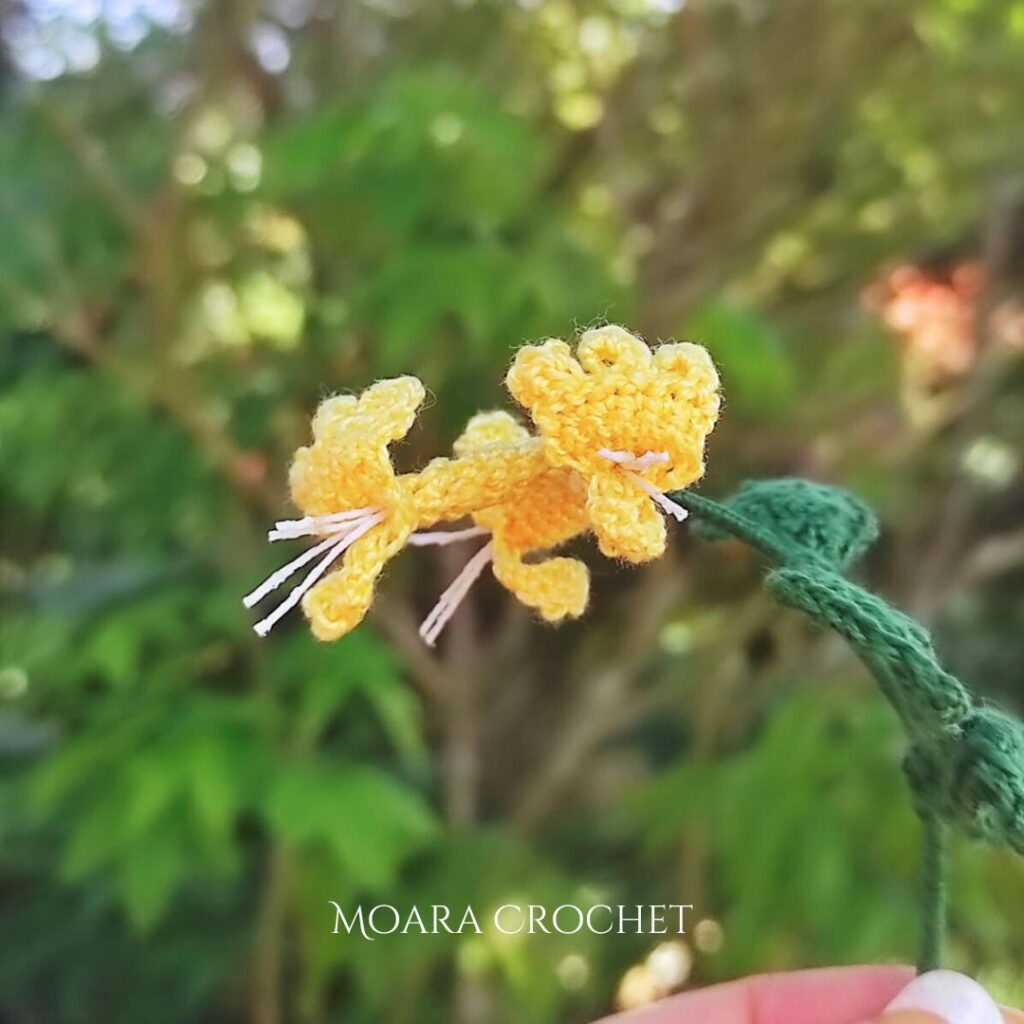
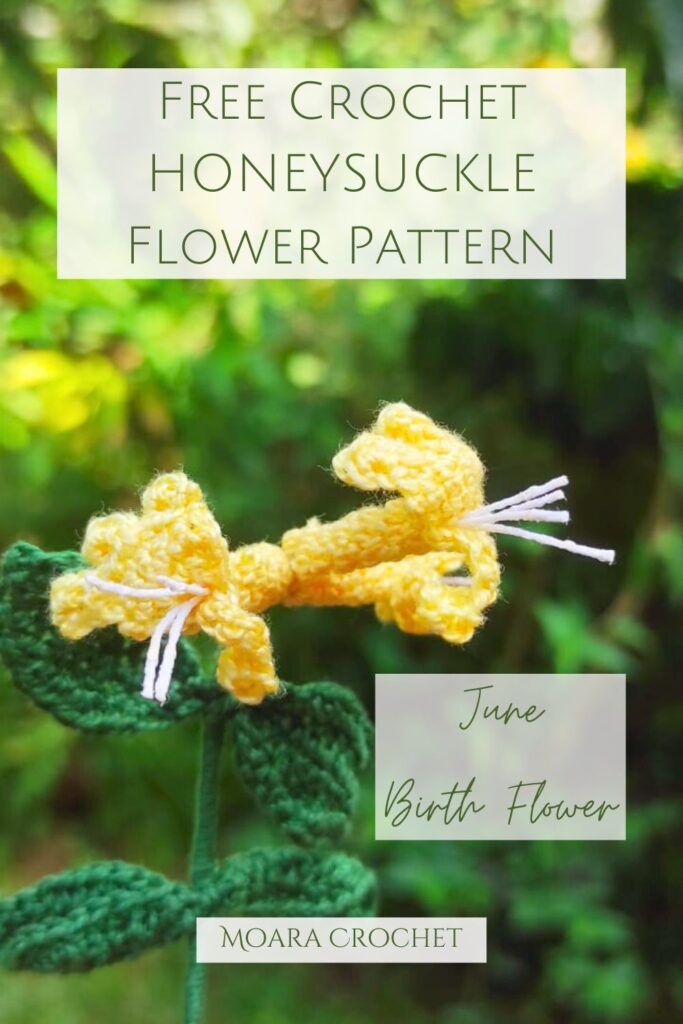

Today I am sharing with you my Crochet Honeysuckle Pattern to celebrate all of those born during June. The Honeysuckle plant symbolizes love, affection & devotion. The sweet smell given from the delicate blooms are believed to represent the sweet, happy moments in life. This plant also gives abundent blooms which represents the generous nature of those born in the month of June.
The second birth flower for June is the Rose flower. This bursting petaled flower symbolize love, affection and devotion. If you would like to make my Crochet Rose Birth Flower click HERE.
This is a easy crochet flower pattern to create which you can make with any yarn and matching sized crochet hook (although you do want to keep your stitches tight, so use the smallest crochet hook you can for your sized yarn). Depending on the size of yarn you use will increase or decrease your sized flower, but I can promise they will all be beautiful. To create a realistic spray of flowers you will need a between 3-4 flowers.
My free pattern includes the step by step tutorial to crochet the flower ONLY. If you would like to support me to continue creating FREE PATTERNS, you can purchase the full PDF pattern including Flower and Leaf tutorial in my Webshop or in my Etsy for only $1.99.
My free Crochet Honeysuckle pattern is written below with a simple step by step written | photo tutorial. Or if you prefer a video tutorial, I have also made a Youtube video.
Materials (Per Flower)
- 5 meters lemon lace weight Yarn (I have used some vintage thread I had in my stash)
- 2 meters green lace weight yarn (I have used Clea yarn from Circulo)
- Matching crochet hook for your yarn I have used between 1.25mm | US 10 Crochet Hook
- Scissors
- Tapestry Needle
- 40cm piece of wire
- Pliers
Gauge: N/A Use the smallest crochet hook you can with your chosen yarn to create tight stitches, this will help your flower keep the form.
Size: My crochet Flower is 2cm diameter, 4cm in length with a 1.25mm hook.
Notes: The flower is made in the round. A wire is threaded through the base of the flower then green yarn is used to wrap around the wire. This pattern ONLY includes the flowers.
Crochet Stitches
To make my crochet Honeysuckle, you will be using a few advanced crochet stitches including: Slip Stitch (sl st), Single Crochet (sc), Half Double Crochet (hdc), Picot (picot).
Crochet Flower (Make 3-5)
Row 1 Lemon Yarn: Make a magic circle, ch1 (count as heightening chain), add 6sc into the center of the magic circle, continue in the round. Total: 6sc.
Rows 2- 6: 6sc. Total: 6sc.
Row 7: Chain 6, add 3hdc into the second chain from the hook, 4sc, sl st into the next stitch.
Row 8: 4sc, sl st into the next stitch. TURN
Row 9: Sc inc, 2sc, sc inc. TURN
Rows 10-11: 6sc. TURN
Row 12: *ch2, add 3hdc into the second chain from the hook, sl st, sl st* repeat * to * 1 more times, ch2, add 3hdc into the second chain from the hook, sl st. Fasten off & weave in your ends.
To create the stamens in the center of the flower, fold two small pieces of thread pull through the centre of the flower with a crochet hook and secure with a stitch. Now you will have 4 pieces of thread coming out of the flower, cut the thread to your desired length. Repeat this process for the other flowers.
How to Assemble Crochet Honeysuckle Flower
Step 1: Cut the florist wire into a 40cm piece.
Step 2: Bend the long florist wire in half, thread this through the base of the flowers, pinch with pliers to secure around the flower as shown in the photo.
Step 3: Thread a 2m meter piece of green yarn through the base of the flower, carefully wrap the yarn around the folded wire until you reach the end. Fasten off and weave in your ends.
If you would like to add leaves you can buy the full pattern HERE.
Congratulations you have made your Crochet Honeysuckle Flower. I would love to see you crochet creations, please tag me on @moara_crochet on Instagram to share your work.
WANT TO MAKE MY FREE CROCHET HONEYSUCKLE FLOWER PATTERN?
PIN IT TO YOUR CROCHET OR CRAFT BOARD TO SAVE FOR LATER!
FIND ME ON
FOR MORE FREE CROCHET PATTERNS!
Source link

